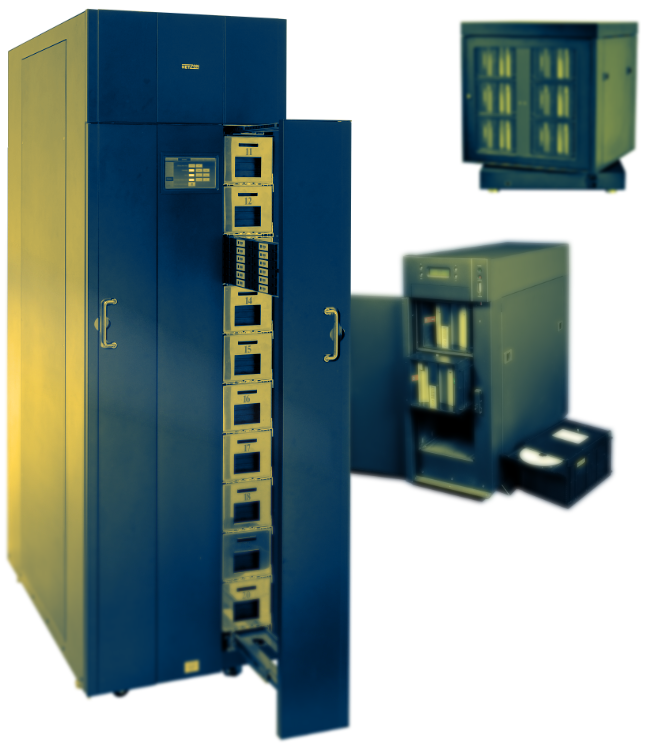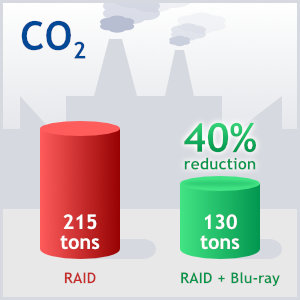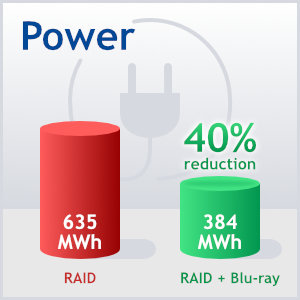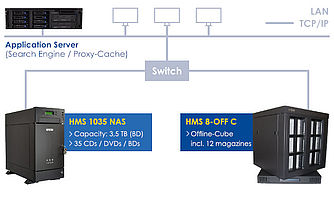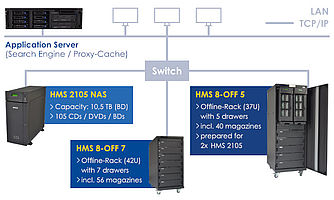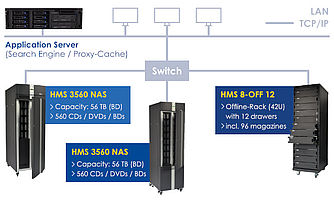Secure and energy-efficient data management
For over 15 years, HIT-Storage has been developing its library product range – originally adopted from Grundig Zeiss – with its German engineers in Suzhou, China. The result of the continuous research and development is highly reliable optical storage for cost-effective and secure long-term archiving, as used in data centres around the world by banks, hospitals and insurance companies.
In its various ranges, HIT-Storage offers optical Netzon libraries, often referred to as “jukeboxes” – ideal for the long-term archiving of business-critical digital data. Thanks to a wide range of solutions, the data can be accessed directly via a transparent file system, but also kept in database-supported offline libraries.
Optical libraries - energy-efficient long-term archiving
The optical libraries stand out thanks to their use of Blu-ray disks which, once written on, cannot be changed (trueWORM), and thus meet one of the most important requirements in terms of business compliance and regulations in other areas, such as the in medical sector.
Thanks to the long durability of the data carriers (50 years or more), migration costs (which can be very high) are also avoided – whereas tapes or hard drives, for example, generally need to be wholly or partially replaced after 5-10 years.
Optical libraries are also unbeatable in terms of energy efficiency. As long as the data is not accessed, the Blu-rays sit in their slots (HMS archive storage) or cartridges (HDL archive memory) and consume no electricity. On the other hand, tapes need to be spooled on a regular basis for the sake of durability, and at the latest when a single file on the tape is needed; hard drives spin on a permanent basis, thus consuming power and generating heat in data centres, which are expensive and time-consuming to cool. Based on a 1000 TB archive system, it is possible to reduce the CO2 emissions by 85 tonnes per year, assuming just 400 TB is stored on Blu-ray instead of hard drive. (Source: Panasonic)
Flexibility meets efficiency
Depending on requirements, the HIT NETZON libraries can be controlled via simple and economical software, or via a complex and highly efficient storage management solution. In the latter case, for example, the most recently and frequently used files can be kept in a ring cache, so that the requested information is readily available for the user. Optical libraries are therefore also ahead of other solutions in terms of speed.
For data that no longer needs to be accessed, HIT also offers NETZON offline solutions, where the data is stored in RFID-enabled magazines in cabinets. If the data is then actually required once again, the user or administrator receives information as to which magazine the data is stored, and is prompted to insert the relevant magazine into the reader.

